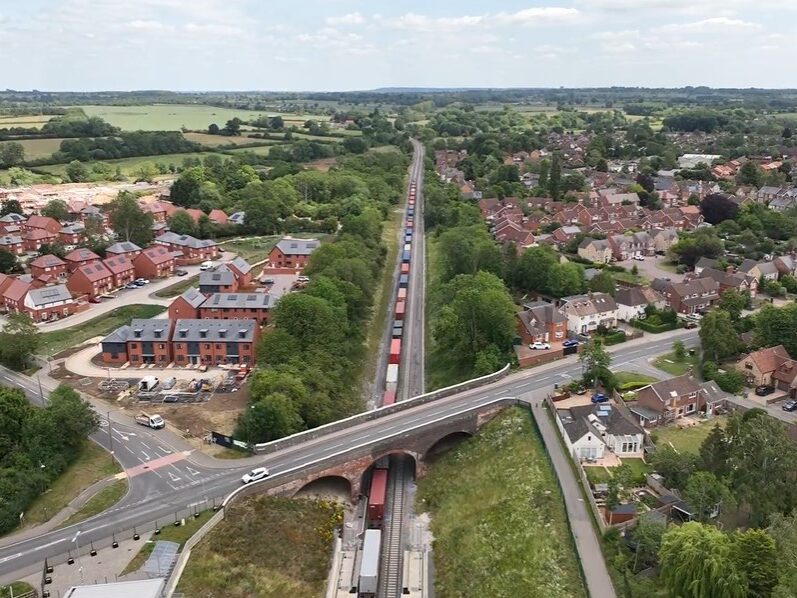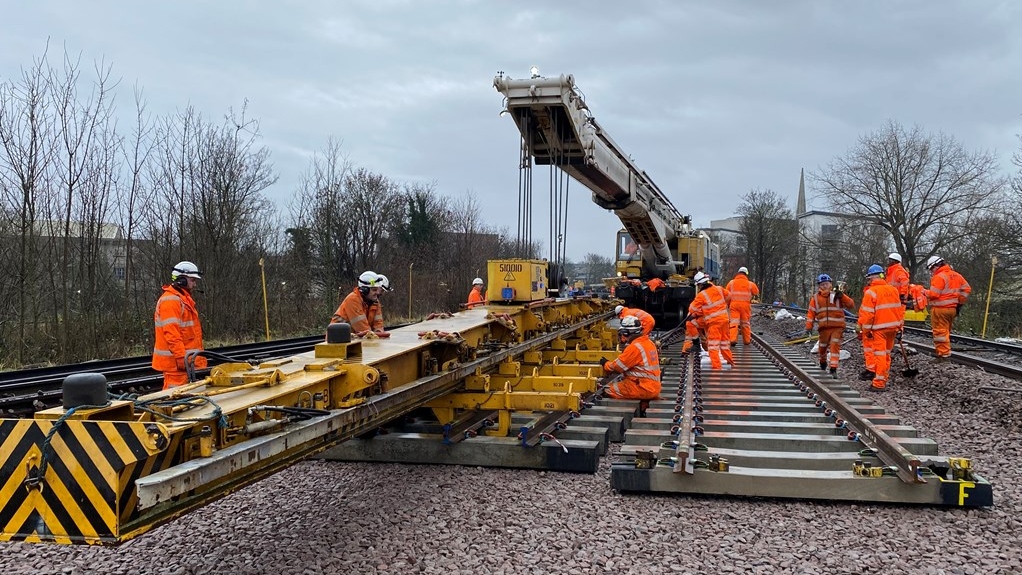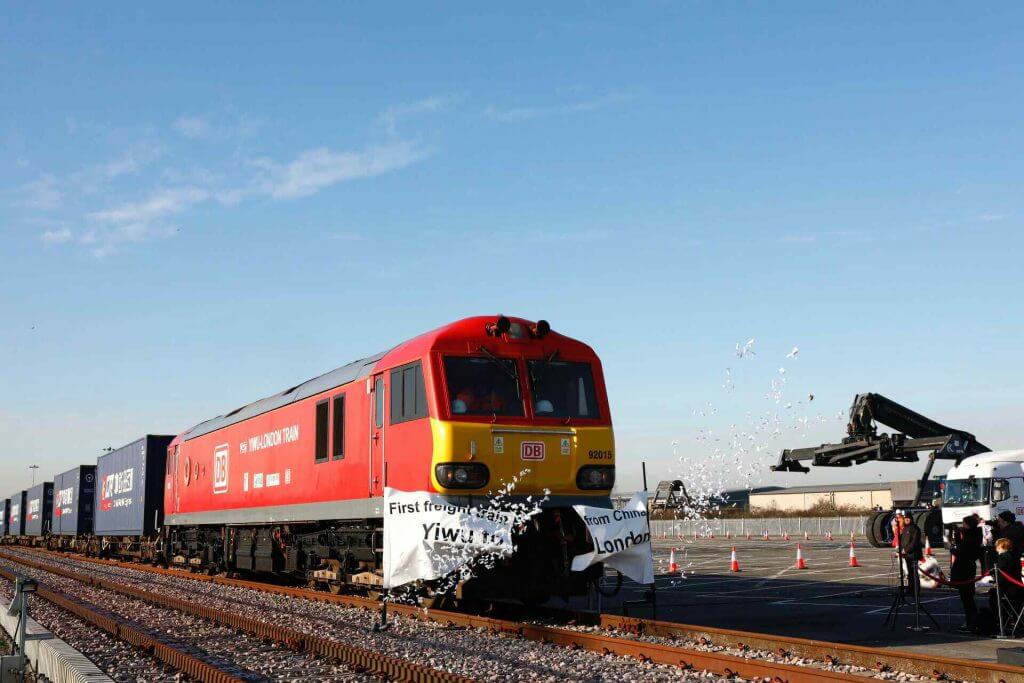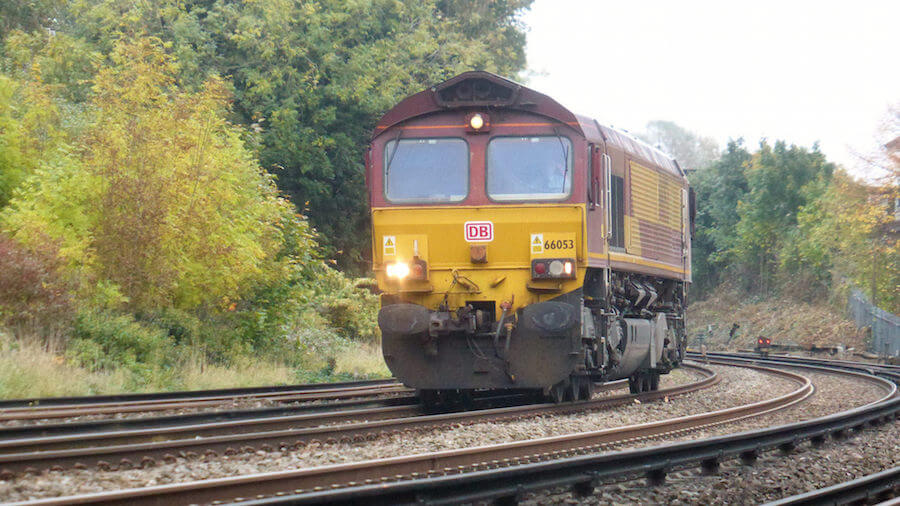A Look at the East Wind Freight Train that Travelled from China to London
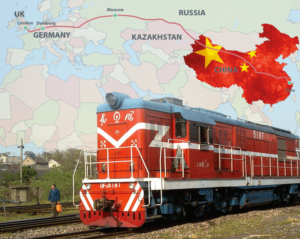 As was widely reported to much fanfare on 18 January of this year, the first freight train travelling between China and the UK arrived in London, at DB Cargo UK’s Eurohub Centre in Barking, having departed Yiwu, in the eastern province of Zhejiang on 1 January.
As was widely reported to much fanfare on 18 January of this year, the first freight train travelling between China and the UK arrived in London, at DB Cargo UK’s Eurohub Centre in Barking, having departed Yiwu, in the eastern province of Zhejiang on 1 January.
We wanted to take a closer look at the journey as the train dealt with a whole host of issues, from technical aspects such as interoperability to political and economic ones, such as customs checks. The ‘Study on Corridors’ by OTIF, the Intergovernmental Organisation for International Carriage by Rail, which has 50 Member States, stated that the key issues for international rail transport “include the harmonisation of transport documents and technical standards, use of electronic records and the simplification of customs procedures etc.”
Background
The Silk Road is the oldest overland trade route in the world, running between China in the east and Europe in the west. Goods such as gunpowder and spices were transported, and of course the eponymous silk, the most lucrative of all the commodities traded.
Now, the president of China, Xi Jinping, launched a revival of the Silk Road, an undertaking he calls One Road, One Belt, designed to link the east and west again with both an overland trade route, this time by train, and a maritime route. Unveiled in 2013, the first train to run on this network reached Iran from China in February 2016.
The One Road, One Belt policy is an enormous economic undertaking, intended to increase China’s influence on global trade. In fact, China’s president said he hoped this new Silk Road would bring in an extra $2.5 trillion to China in ten years. With China excluded from the US’s TPP, China wants to assert its own economic dominance in Eurasia. With more than 60 countries involved in the entire network, such a partnership can enhance economic and therefore political stability in regions and benefit everyone through mutual access and exchange.
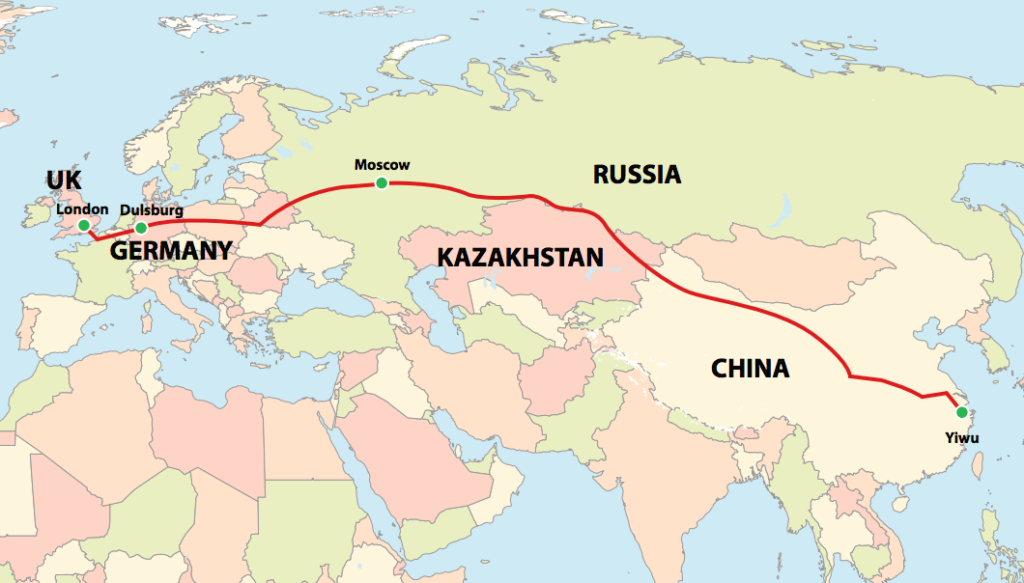
Route of the New Silk Road
The One Belt One Road overland route is not one linear route from east to west, it is instead a whole network of routes linking 16 Chinese cities to 12 European ones.
- Total length of 11,000 kilometres (7456 miles)
- Travelled through 9 countries (China, Kazakhstan, Russia, Belarus, Poland, Germany, Belgium, France, UK)
- Carried 34 containers
- Cheaper than air freight and faster than maritime freight
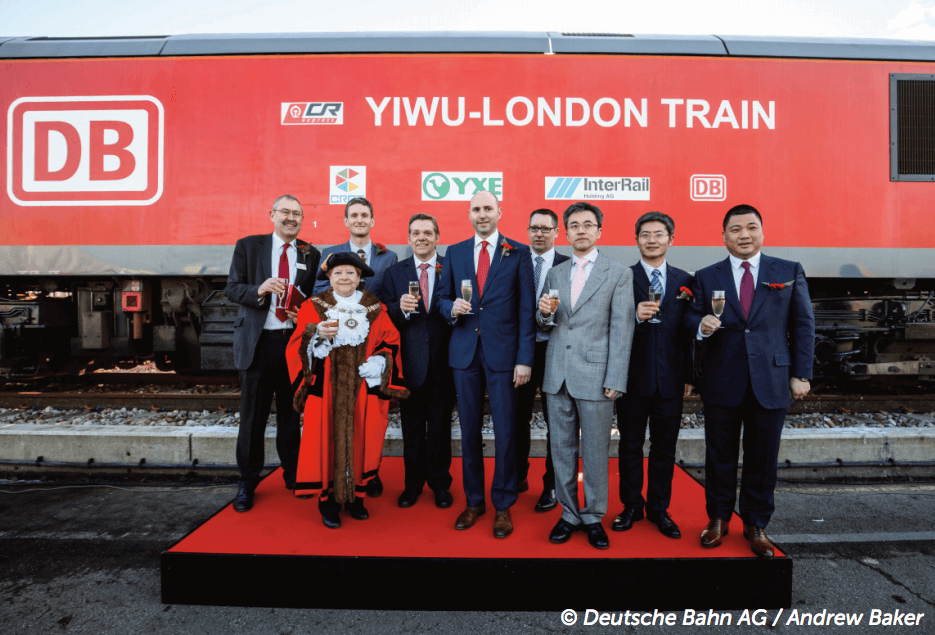 China
China
The East Wind freight train began its long journey in Yiwu, in the far east of China, south of Shanghai, at the Yiwu West Railway Station. It then travelled the width of the country, on standard gauge lines (1,435mm), heading northwest to the border of Kazakhstan.
Kazakstan – Russia – Belarus
Crossing the border into Kazakhstan at Alashankou/Dostyk, on the Dzungarian Gate, an important mountain pass along the Eurasian Land Bridge, the containers had to be unloaded and the rolling stock (platform wagons and locomotive) replaced to accommodate the 1,520mm ‘Russian’ gauge in place in Kazakhstan, Russia and Belarus.
There are customs checksbetween China and Kazakhstan. However, inspired by the European Union, Kazakhstan, Russia and Belarus entered a customs union in 2010, which became the Eurasian Customs Union in 2015. This allows for smooth border crossings between Kazakhstan and Russia and Russia and Belarus on this front.
The freight train continued northwest, to Astana, the country’s capital. The 839km from Dostyk to Monty is not yet electrified though these works are planned to be completed in 2018. The 1071km from Monty via Astana to Petropavlovsk on the Russian border is already electrified.
After leaving Kazakhstan shortly after Petropavlovsk, the East Wind continued its westward journey in Russia, travelling 2448km to Moscow. Incidentally, one of the reasons China is interested in developing its freight rail route through Russia is the devaluation of the rouble, making it a cheaper choice.
The stretch between Moscow and the Kazakh border is also electrified. However, the two countries have different electrification systems. This means that either the train at the SinoKazakh border had to be a twosystem locomotive or the locomotive had to be changed at the Kazakh-Russian border, despite the gauge remaining the same.
Having reached its northernmost point in Russia, the train now headed southwest, on PanEuropean Corridor II, towards the border with Belarus. The train made its way through Orsha (Belarus), through the country’s capital of Minsk and onwards to Brest on the Belarusian-Polish border.
Here once again the train was confronted with customs checks as it left the Eurasian Customs Union and Entered the European Union. Another factor was the second break-of-gauge, with the whole of the EU operating, like China, under the standard 1,435mm gauge.
Poland – Germany – Belgium – France
Once in Poland, the freight train traversed the country east-west via its capital of Warsaw before heading straight into Germany at Frankfurt-an-der Oder, without customs or gauge issues.
The train continued through Berlin and headed to Duisburg, at which point DB Cargo UK took over with an electrified Class 92 locomotive, a dual voltage locomotive that can use both overhead wires or a third rail and that was designed especially to run services through the Fixed Link between France and the UK.
The East Wind steadily continued through both Belgium and France before making its way through the Channel Tunnel and entering the UK. Six of the containers had to be transported by ferry instead for safety reasons.
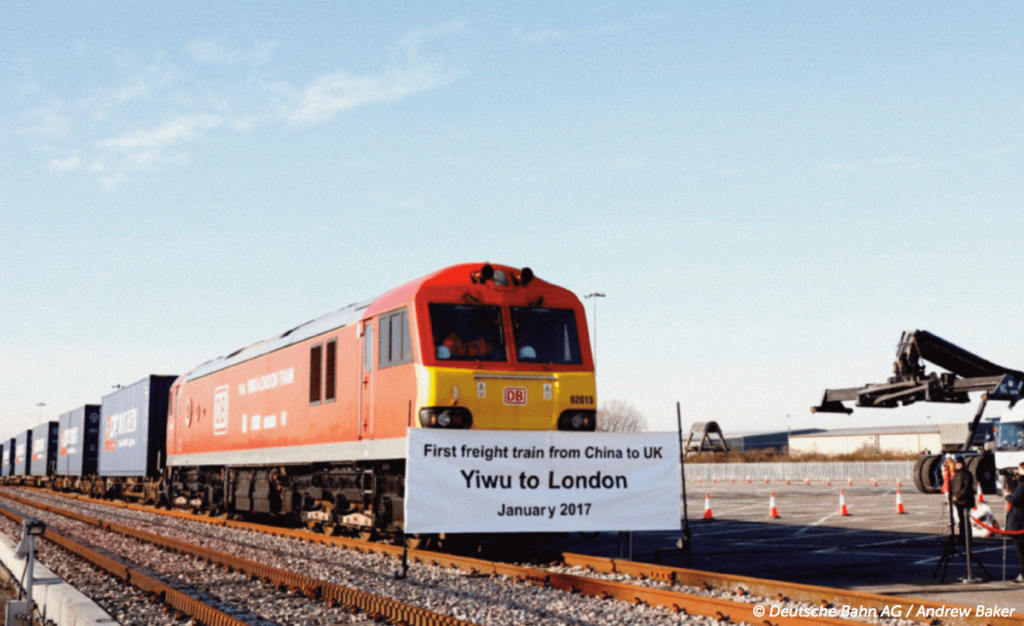 UK
UK
The UK also operates on standard gauge lines and is currently a member of the European Union. However, given last year’s Leave decision on the UK’s referendum on EU membership, Prime Minister Theresa May has given a speech stating that it is the UK’s goal to leave both the Single Market and the Customs Union. Politically the UK seeks to brand itself as ‘global’ and ‘open for business’. The arrival or the cargo train from China is a positive for a Government wishing to emphasize trade links to major economies outside of the European Union.
However, this train (to serve as an example) clearly benefitted from a lack of customs checks at the French-British border and from the European Union’s continued effort to create a Single European Railway Area, with technical interoperability – from everything from signalling to fire safety standards – and a huge reduction in red tape.
How the UK will choose to proceed from hereon in with regards to railway harmonisation remains to be seen. However, less than 1% of EU-Asia trade is currently conducted overland. Most is still done by sea. Although this option takes longer, overland rail transport is more expensive. It should also be noted that although rail transport is responsible for a much lower carbon output than air transport, shipping is, surprisingly, still the most carbon-friendly option.
After almost 12,000 kilometres the East Wind switched to being powered from the rear by a Class 66 diesel-electric locomotive as the DB Cargo UK’s Eurohub in Barking is not electrified. It arrived with its cargo of 34 40-foot containers, filled with goods such as clothes and other high street goods.
The current plan is to run a weekly service to gauge (excuse the pun) demand. However, with increased harmonisation, with the further roll-out of ERTMS signalling and the reduction in other barriers, China’s One Belt, One Road policy is set to access and integrate markets, continuing the legacy of the original Silk Road, which started in around 120BCE, fuelling the exchange not just in goods, but also culture and technology.

















